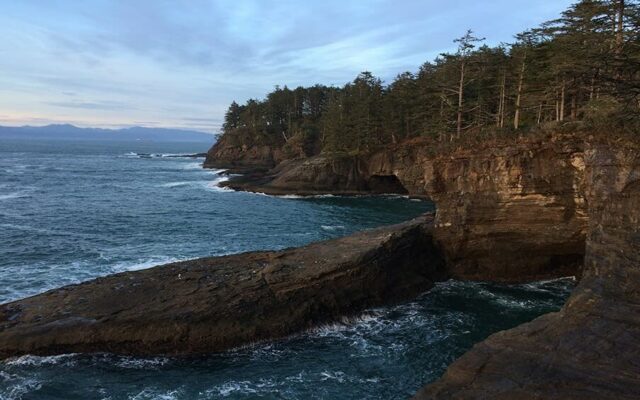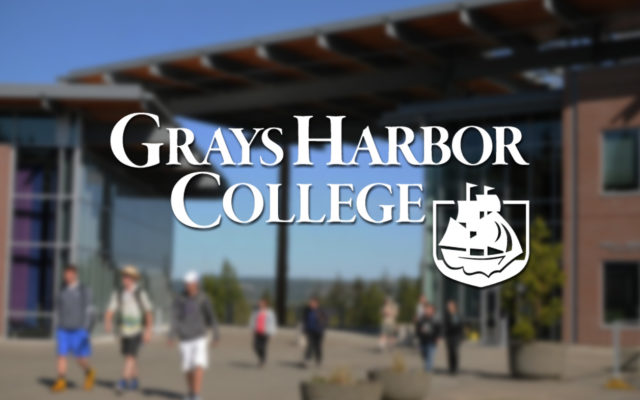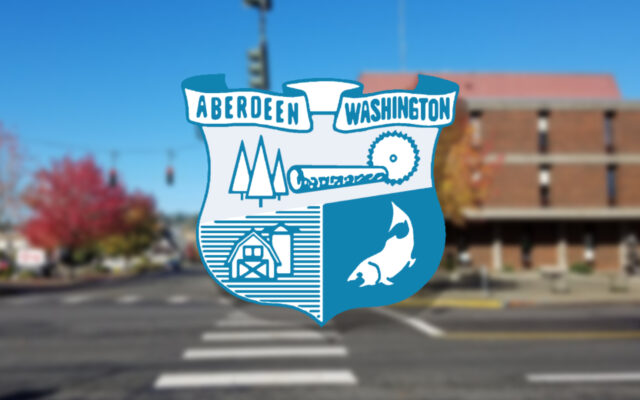Public meetings scheduled to review Olympic Coast National Marine Sanctuary management plan

A review of the Olympic Coast National Marine Sanctuary management plan is underway, and the public is invited to upcoming meetings to make comments.
The Federal Register shows that the Office of National Marine Sanctuaries (ONMS), National Ocean Service (NOS), National Oceanic and Atmospheric Administration (NOAA), and Department of Commerce (DOC) have initiated a review of the management plan for the Olympic Coast National Marine Sanctuary, with the intent to conduct scoping and prepare a draft environmental analysis and draft management plan.
This action is being taken in accordance with section 304(e) of the National Marine Sanctuaries Act, and the review is being initiated “to evaluate substantive progress toward implementing the goals of the sanctuary, and to make revisions to the management plan as necessary to fulfill the purposes and policies” of the NMSA.
NOAA will conduct public scoping meetings to gather information and other comments from individuals on the scope, types, and significance of issues related to the OCNMS management plan and the proper scope of environmental analysis for the management plan review.
This includes a meeting this month in Pacific Beach.
The Olympic Coast National Marine Sanctuary (OCNMS or sanctuary) was designated in July 1994 and spans 3,188 square miles of marine waters off the coast of the Olympic Peninsula.
The current OCNMS management plan was published in 2011, and is available on the internet here: https://olympiccoast.noaa.gov/management/2011-plan/.
In 2018, NOAA completed an internal assessment of the 2011 management plan to gauge progress toward its goals and objectives. This internal assessment showed that the action plans of the 2011 management plan accurately reflected the ongoing management priorities and resource protection issues and were adequate to continue guiding OCNMS operations and programs.
Input was solicited from Sanctuary Advisory Council members and staff during the internal assessment process.
The OCNMS management plan review may result in proposed changes to existing programs and policies to address contemporary issues and challenges, and to better protect and manage the sanctuary’s resources and qualities.
The review process is composed of four major stages:
- information collection and characterization including through a public scoping process;
- preparation and release of a draft management plan and a draft environmental analysis conducted under NEPA, and any proposed amendments to sanctuary regulations;
- public review and comment on the draft documents; and
- preparation and release of a final management plan and environmental analysis document, and any final amendments to sanctuary regulations, if applicable.
NOAA will also address other statutory and regulatory requirements that may be required pursuant to the Endangered Species Act (ESA), Marine Mammal Protection Act, Essential Fish Habitat (EFH) provisions of the Magnuson-Stevens Fishery Conservation and Management Act (Magnuson-Stevens Act), Coastal Zone Management Act (CZMA), National Historic Preservation Act (NHPA), and tribal consultation responsibilities under Executive Order 13175.
DATES:
Written comments should be received on or before April 3, 2023.
Public scoping meetings will be held on:
- Date: February 21, 2023, Location: Pacific Beach Elementary School Gymnasium, 11 4th St. S, Pacific Beach, WA, Time: 5-8 p.m.
- Date: February 22, 2023, Location: Rainforest Art Center, 35 North Forks Avenue, Forks, WA, Time: 5-8 p.m.
- Date: February 23, 2023, Location: Makah Community Gym, 1394 Bayview Ave., Neah Bay, WA, Time: 5-8 p.m.
- Date: February 24, 2023, Location: Pirate Union Building Cafeteria, Peninsula College Longhouse, 1502 E Lauridsen Blvd., Port Angeles, WA, Time: 5-8 p.m.
- Date: February 27, 2023, Location: See details online at: https://olympiccoast.noaa.gov/management/mpr. Time: 5 p.m.-TBD.
NOAA will be taking audio recordings of the public meetings, including the public comment portion of the meetings. NOAA may end a meeting before the time noted above if all those participating have completed their oral comments.
NOAA is interested in receiving input on:
- The effectiveness of the existing management plan in meeting both the mandates of the NMSA and OCNMS goals and objectives.
- The effectiveness of OCNMS programs, including programs focused on resource protection; education and outreach; and research and monitoring.
- NOAA’s implementation of OCNMS regulations and issuance of permits.
- The existing operational and administrative framework at OCNMS (staffing, offices, vessels, capabilities, infrastructure, etc.).
- The relevance and timeliness of the management issues identified below.
Partnerships and Coordinated Management
Given its broad geographic scope and mission of the sanctuary, NOAA depends on partnerships to act as a force multiplier in overall stewardship efforts for the Olympic Coast. Active partnerships also provide a more transparent and inclusive structure for management of Olympic Coast marine resources within tribal, local, state, federal, and international jurisdictions, and enable a collaborative and coordinated approach to sanctuary management. For example, the Olympic Coast Intergovernmental Policy Council remains an important forum through which NOAA engages with the four Coastal Treaty Tribes and the state of Washington in their role as governments and co-managers of resources. NOAA seeks input on how the sanctuary can enhance its partnerships with entities in these various jurisdictions for more effective management and stewardship of Olympic Coast resources. In addition, NOAA welcomes input as to what new or strengthened partnerships would help other entities leverage the sanctuary’s capabilities with regard to its research, resource protection, and education and outreach programs.
Changing Ocean Conditions
Ongoing changes to the climate and marine ecosystems of the Olympic Coast have been documented, yet there continues to be considerable uncertainty about current and future consequences at local, ecosystem, and ocean-wide scales. Drawing in part from the sanctuary’s long-term oceanographic monitoring program, NOAA has observed changes in the coastal ecosystem off the Olympic Coast that may worsen in intensity, duration, and frequency in the future as a result of climate change. Specific concerns include the impacts of hypoxia (low dissolved oxygen levels), ocean acidification, harmful algal blooms, ocean warming and marine heatwaves. NOAA is interested in ideas regarding how to best incorporate climate change research, adaptation and mitigation efforts into the OCNMS management plan, including ways to enhance coordination with partners, as well as input on the types of monitoring data and efforts that would be the most effective to aid adaptive management.
Resource Monitoring and Assessments
Assessing and monitoring the conditions of sanctuary resources, both natural and cultural, are a critical part of sanctuary management. Related research and monitoring efforts have always been a major focus for the sanctuary, and are often collaborative. Primary research programs for the sanctuary include long term oceanographic monitoring of changing ocean conditions, ecosystem monitoring in intertidal habitats and kelp forests, seafloor mapping, deep-sea habitat exploration and characterization, and acoustic monitoring of underwater sound. Staff also collaborate on maritime and cultural heritage projects and support social science research efforts. Given the many needs and possibilities as well as limited resources, it is imperative to further focus NOAA’s efforts on data that it is uniquely positioned to gather and share. NOAA seeks input on what research and monitoring efforts would be most beneficial and informative for resource (natural and cultural) management decisions, including those of its partners, and how it can improve data-sharing.
Compatible Resource Use
Facilitating sustainable human use of the sanctuary in a manner compatible with the objectives of OCNMS and the NMSA is an important sanctuary responsibility. While NOAA generally does this through permitting and NMSA section 304(d) consultations, the potential impacts of various uses, particularly emergent technologies, on the seafloor and other habitats, wildlife, and other sanctuary resources are not always fully understood. Examples of human uses which may provide broad public benefits but also potentially impact sanctuary resources include: commercial development such as offshore renewable energy, aquaculture, fiber-optic cables, and emergent technologies such as carbon capture and the use of uncrewed systems ( e.g., drones) as tools for research and monitoring. NOAA seeks input regarding which human activities have the most potential to impact sanctuary resources, what those potential impacts may be, and the means by which the sanctuary can best monitor, address, and/or mitigate those impacts.
Wildlife Disturbance
NOAA remains concerned about acoustic, physical, and visual disturbances caused by human activities in the sanctuary, as they can have physical and behavioral impacts on wildlife above, below, and on the water surface. Wildlife responses to disturbance include flushing birds from their nesting roosts, flushing of marine mammals from haul out areas, other behavioral changes, or even death. Sources of wildlife disturbance in the sanctuary include low-flying aircraft, motorized personal watercraft, fireworks, close proximity to wildlife aggregation areas (by land, water, or air), and other human-generated noises from activities such as shipping, military exercises, or seismic exploration. NOAA seeks input regarding which human activities have the most potential to disturb wildlife and the means by which the sanctuary can best monitor, address, and/or mitigate such disturbances.
Water Quality
NOAA strives to maintain and improve water quality in the region. Although water quality within the sanctuary is generally good as described in the 2022 Condition Report, NOAA remains concerned regarding the potential for contamination through vessel discharges ( e.g., ballast water and treated or raw sewage) and through the unintentional introduction of petroleum products, pathogens, and chemicals. There are also several contaminants of concern ( e.g., microplastics) that enter marine waters through wastewater treatment plants, stormwater outfalls and runoff, industrial outfalls, and landfills. NOAA is interested in the public’s views regarding what human activities and sources have the most potential to impact water quality in the sanctuary, what those potential impacts may be, and the means by which the sanctuary can best monitor, address, and/or mitigate those impacts.
Introduced Species
Although relatively few non-indigenous species have been reported in sanctuary waters, introduced species can pose a threat to marine life and habitats. For example, introduced European green crabs were first identified in habitats adjacent to the sanctuary in 2017 and their populations have exploded since then, which presents a rapidly emerging threat to native species as well as to the shellfish industry in Washington state. European green crabs compete with native species and damage nearshore habitats, which often serve as important nursery areas for species like salmon and Dungeness crab. NOAA seeks input regarding how the sanctuary can best contribute to partner efforts aimed at management of introduced species.
Education and Outreach
Enhancing the public’s awareness and appreciation of the Olympic Coast’s natural and cultural resources is a cornerstone of the sanctuary’s mission. NOAA is seeking input on the effectiveness of the sanctuary’s current education and outreach programs and ideas regarding how to continue to expand public awareness, including opportunities to participate in environmental research and monitoring, integrating outreach into all education levels, and more effective partnering with tribes, federal and state agencies, local businesses and organizations, and other user groups.
You Might Also Like



